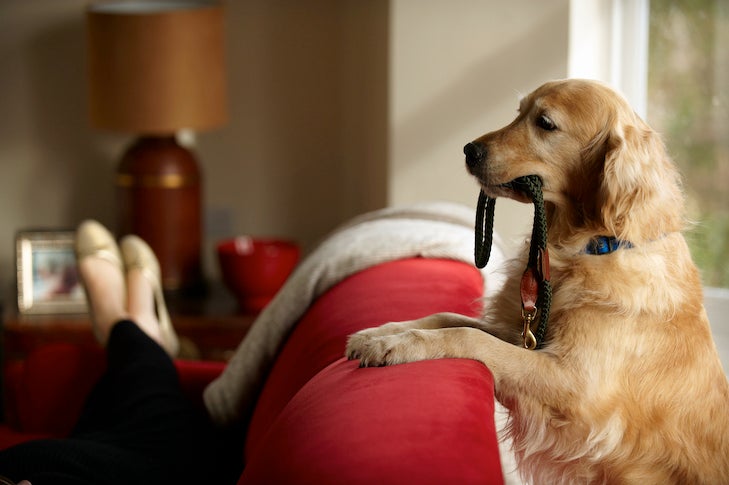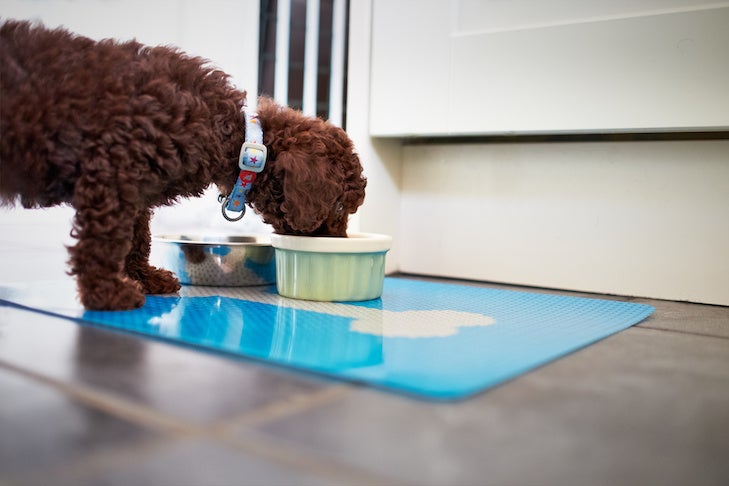
By Anna Burke and Harriet Meyers
One weekend last winter, my neighbor managed to schedule a relaxing getaway to soak up the sun in Florida. She made arrangements for a pet sitter to care for her Rhodesian Ridgeback, and left the sitter the code to the keypad on the garage door and several pages of instructions on the kitchen table. She anticipated every aspect of dog care – except one.
When the pet sitter arrived on the designated day, the garage door wouldn’t open. The code was correct, but the frigid temperatures had depleted the old batteries in the keypad. The dog was howling, and there was no way to get inside. And the owner’s phone numbers in Florida were left on the kitchen table.

Leaving your dog in someone else’s care can be stressful for you and your dog. Luckily, there are some things you can do to make sure everything goes as smoothly as possible. This checklist will help you and your pet sitter work together to keep your dog happy, healthy, and safe while you’re away.
Keeping Your Dog Healthy and Well Fed
- Make sure your dog has plenty of food, and label food containers, especially if you have multiple pets on different diets.
- Leave detailed feeding instructions, including portion size, how many times a day your dog is fed, and other special considerations, such as feeding order of multiple pets.
- Double-check that your dog has enough medication, and write out instructions for administration and where it’s kept, out of your dog’s reach. Demonstrate how to dose your pet.
- Leave your veterinarian’s name, phone number, and location, and contact your veterinarian’s office to let them know you have a pet sitter authorized to care for your pet.
- Many pet sitters will ask that you fill out a form explaining the type of veterinary care your dog can receive if you can’t be reached, including a spending cap for emergencies. If they don’t, consider providing one. Leave the pet sitter a list of vaccinations and dates received.
- Most important, give your pet sitter your itinerary and several forms of contact for you – including your cell phone and the names and phone numbers for the places you’ll be staying.

Making Sure Your Dog Is Safe
- Put ID tags on your dogs’ collars if you have multiple pets, especially if they’re the same breed. If you have different breeds, you can include your dogs’ breeds with their names on your instruction sheet to rule out any confusion.
- If the pet sitter will be going out, ask that the dog never be left alone wearing a collar with a hanging tag that can get caught in air vents or crate openings.
- Leave your dog’s leash, poop bags, food, bowls, and other supplies in a place that your pet sitter can find easily, but out of your dog’s reach.
- Let your sitter know where your dog’s carrier or crate is in case of an emergency.
- Leave a dog first aid kit for your pet sitter.
- Make sure your backyard is secured, or instruct your pet sitter to keep your dogs on a leash at all times outside to prevent an escape.
- Leave out any toys you want your dog to have access to, and put away toys that could pose a choking hazard.
- Leave at least one and preferably two names and contact information of people you trust to make decisions in case you can’t be reached. Be sure to ask those people before you do this.
Leaving Directions About Your Home
- Include instructions about your home, such as alarm codes, water turn-off, circuit breakers, your landlord’s name and phone number, and the names of anyone else who may be in your home during your absence. Let your neighbor or landlord know that you’ll have a pet sitter, and provide them with your pet sitter’s contact information in case of emergency.
- Leave a set of keys, even if you have a keypad. Sometimes keypad batteries die, and there’s no way to open the outside door without a key. As a backup, leave a key with a neighbor.
- Remove any potentially harmful objects out of your pets’ reach, like plants, trash, or cleaning supplies. Stressed pets may exhibit behaviors they wouldn’t normally exhibit if you were home. Consider blocking your dogs in one room, or crating them for their safety.
- If your pet sitter will be staying in your home, make sure you provide instructions about where to sleep, how to work your television, how to operate the heat/air conditioning, if the doors and window should be locked, which bathroom to use, and whether you’re comfortable having other guests in your home.
- Provide clean linens, toilet paper, and be clear about whether or not the sitter can eat the food in your refrigerator and pantry.
- Keep cleaning supplies in an obvious location (but somewhere your dog can’t reach) in the event your dog has an accident or creates a mess.
Prepping your house for a pet sitter helps to ensure that your dog will get the best possible care, and it is also a great way to make your pet sitter feel appreciated.


